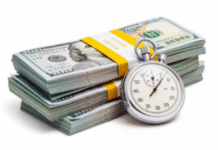
Trade deficit narrowed heavily in the first two months of the fiscal year in the wake of falling imports because of the ongoing economic slowdown, a sign of depressed demand and consumption.
Between July and August, trade deficit, which occurs when imports outweigh exports, stood at $698 million, down 66 per cent year-on-year, according to data from the Bangladesh Bank.
During the period, imports declined 13.85 per cent from that a year earlier to $7.43 billion and exports rose 2.39 per cent to $6.73 billion.
All indicators of the balance of payments (BoP) have posted a shining mark, but these will not have a remarkable positive impact on the GDP growth, experts said.
Current account balance, one of the major indicators of the BoP, stood at $3.29 billion in the first two months in contrast to $204 million during the same period a year ago.
The current account includes all the transactions (other than those in financial items) that involve economic values and occur between resident and non-resident entities.
“The ongoing economic meltdown brought on by the coronavirus pandemic has adversely affected the domestic demand, heavily bringing down import payments,” said Mustafizur Rahman, a distinguished fellow of the Centre for Policy Dialogue.
Also, the commodity price in the global market has declined massively. The price of petroleum products also fell. Import of capital machinery has almost come to a halt amid the ongoing slowdown in businesses.
“Rising export earnings is a positive sign for the economy. But, we have still a long way to go as the country will need more time to attain the benchmark of the export which it enjoyed before the pandemic,” Rahman said.
The government will not get any respite from the improvement in the indicators of the BoP immediately as robust domestic demand and consumption are highly important to make the economy vibrant.
“Depressed demand is not a good sign for the GDP growth under any circumstance. The government should address the health issues to push the economy,” Rahman said.
Between July and August, the overall balance stood at $2.47 billion in contrast to $139 million a year earlier.
The strong position of the current account and foreign loans from multilateral lenders helped boost the overall balance of the BoP.
“There is no scope to feel happy watching the indicators of the BoP. The export sector has been in a weak situation considering the pre-Covid-19 level,” said Ahsan H Mansur, executive director of the Policy Research Institute of Bangladesh.
The country is gradually recovering from the meltdown but more time will be needed due to the weak domestic demand, he said, adding that the economic recovery is also dependent on the global situation.
“It is predicted that North America and Europe will require at least five to six months to enjoy recovery from the existing economic hardship,” said Mansur, also a former senior official of the International Monetary Fund.
“But the western nations are now in a panic as they think that a second wave of the coronavirus pandemic will hit them,” he said.
The government has already warned that a similar situation may occur in Bangladesh in the coming winter.
“This will impede the recovery process of the economy. We are far away from the economic revival. And the government should take cautious steps to tackle the ongoing crisis,” Mansur said.
Lower imports and a high volume of remittances have played a great role in widening the foreign exchange reserve.
The reserve stood at $39.04 billion as of August, up 19.11 per cent year-on-year. The volume is good enough to settle import payments of 8.4 months, way higher than the standard limit of three months. The reserve was $39.11 billion on Wednesday, BB data showed.
Remittance inflow jumped 50 per cent year-on-year to $4.56 billion in the first two months of the fiscal year.









